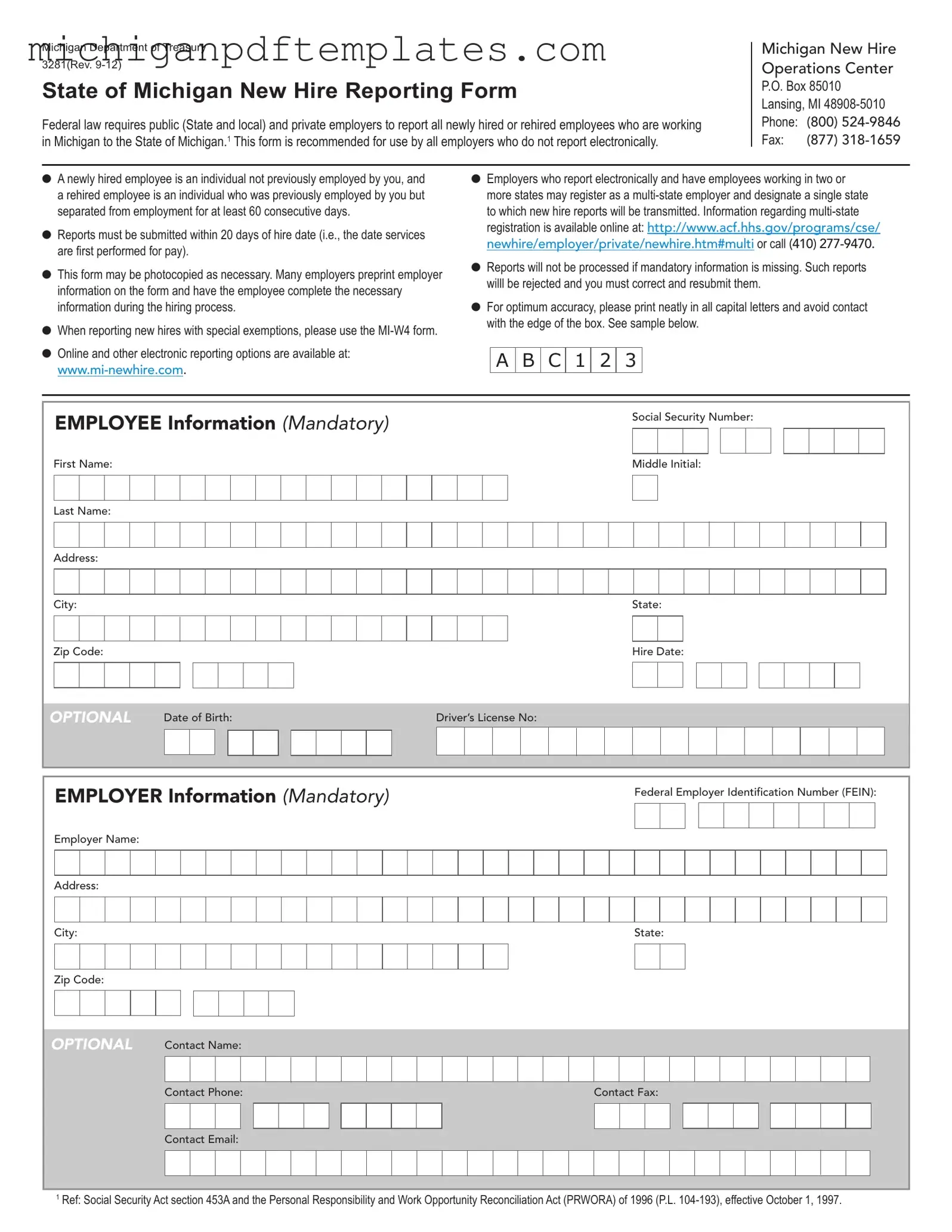The State of Michigan New Hire Reporting form is an essential tool for employers, both public and private, who hire new or rehired employees in the state. This form is mandated by federal law, requiring the reporting of all newly hired individuals, defined as those not previously employed by the employer, as well as rehired employees, who have been separated from employment for at least 60 consecutive days. Employers must submit this report within 20 days of the employee's hire date, which is the first day services are performed for pay. For those who prefer not to report electronically, the form can be photocopied as needed, and many employers find it convenient to preprint their information on the form, allowing new hires to complete their details during the onboarding process. Additionally, special exemptions may require the use of the MI-W4 form, and electronic reporting options are available through the Michigan New Hire Operations Center's website. It’s important to ensure that all mandatory information is filled out correctly, as incomplete reports will be rejected, necessitating a resubmission. For clarity and accuracy, employers are encouraged to print neatly in all capital letters and to avoid contact with the edges of the designated boxes. The form collects critical information, including the employee's Social Security number, name, and address, as well as the employer's Federal Employer Identification Number (FEIN) and contact details.
